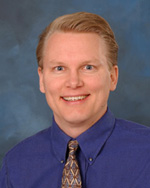Bladder dysfunction resulting from neurological disease or spinal cord injury can have a devastating clinical impact.
Our goal is to understand the complex interactions involved in the systems-level neural organization and control of bladder and urethral function. We use this information to develop neural prostheses or rehabilitative techniques that interface with the nervous system and restore genito-urinary function at the earliest opportunity.
Our research interests are focused in four parallel areas:
- Basic neurophysiology studies to discover and characterize the neural pathways involved in bladder and urethral function.
- Translational research projects to develop methods to conduct investigations in humans and lead to clinical implementation.
- Clinical studies in individuals with and without neural dysfunction.
- Neural engineering studies to design and develop neural prostheses appropriate for the expected clinical applications.
Research Programs
- Electrical Activation of Afferent Nerves to Restore Bladder Function
- Producing micturition by combined afferent and efferent electrical stimulation
- Development of a muscle-powered piezoelectric energy convertor.
Co-Investigator Programs
- Ohio Neurostimulation and Neuromodulation Partnership, National Institutes of Health
- Enhancing Neuroprosthesis Performance with Cuff Electrodes, National Institutes of Health
- Electrical Treatment of Reflex Incontinence, Department of Veterans Affairs Rehabilitation Research and Development Service
- Development and testing of a novel device for diagnosis of urinary incontinence.
- Development of a muscle powered cardiac assist device, NASA
Publications (Select)
- Bourbeau DJ, Creasey GH, Sidik S, Brose SW, Gustafson KJ. Genital nerve stimulation increases bladder capacity after SCI: A meta-analysis. J Spinal Cord Med. 2018 Jul;41(4):426-434. doi: 10.1080/10790268.2017.1281372. Epub 2017 Feb 15. PubMed PMID: 28198657; PubMed Central PMCID: PMC6055968.
- Brose SW, Bourbeau DJ, Gustafson KJ. Genital nerve stimulation is tolerable and effective for bladder inhibition in sensate individuals with incomplete SCI. J Spinal Cord Med. 2018 Mar;41(2):174-181. doi: 10.1080/10790268.2017.1279817. Epub 2017 Feb 10. PubMed PMID: 28185483; PubMed Central PMCID: PMC5901453.
- Brose SW, Montfort J, Gustafson KJ, Mittebrun I, Gauriloff S, Mosher M, Bourbeau DJ. Ultrasound-Guided Steroid Injection of the Pisotriquetral Joint: A Multidisciplinary Effort. Am J Phys Med Rehabil. 2017 Dec;96(12):904-907. doi: 10.1097/PHM.0000000000000773. Review. PubMed PMID: 28582272.
- Majerus SJ, Fletter PC, Ferry EK, Zhu H, Gustafson KJ, Damaser MS. Suburothelial Bladder Contraction Detection with Implanted Pressure Sensor. PLoS One. 2017 Jan 6;12(1):e0168375. doi: 10.1371/journal.pone.0168375. eCollection 2017. PubMed PMID: 28060842; PubMed Central PMCID: PMC5218553.
- Brose SW, Kilbane MJ, Harpster E, Mitchell SJ; ATP., Ho C, Gustafson KJ. Interdisciplinary development of an ergonomic prone mobility cart. J Rehabil Res Dev. 2016;53(4):433-42. doi: 10.1682/JRRD.2014.11.0279. PubMed PMID: 27533301.
- Wark HA, Black SR, Mathews KS, Cartwright PC, Gustafson KJ, Normann RA. Restoration from acute urinary dysfunction using Utah electrode arrays implanted into the feline pudendal nerve. Neuromodulation. 2015 Jun;18(4):317-23. doi: 10.1111/ner.12259. Epub 2014 Nov 28. PubMed PMID: 25430001.
- Ho CH, Triolo RJ, Elias AL, Kilgore KL, DiMarco AF, Bogie K, Vette AH, Audu ML, Kobetic R, Chang SR, Chan KM, Dukelow S, Bourbeau DJ, Brose SW, Gustafson KJ, Kiss ZH, Mushahwar VK. Functional electrical stimulation and spinal cord injury. Phys Med Rehabil Clin N Am. 2014 Aug;25(3):631-54, ix. doi: 10.1016/j.pmr.2014.05.001. Review. PubMed PMID: 25064792; PubMed Central PMCID: PMC4519233.
- McCoin JL, Bhadra N, Brose SW, Gustafson KJ. Does patterned afferent stimulation of sacral dermatomes suppress urethral sphincter reflexes in individuals with spinal cord injury? Neurourol Urodyn. 2015 Mar;34(3):219–223. doi: 10.1002/nau.22545 Pubmed PMID: 24510801
- McCoin JL, Bhadra N, Brose SW, Gustafson KJ. Does patterned afferent stimulation of sacral dermatomes suppress urethral sphincter reflexes in individuals with spinal cord injury? Neurourol Urodyn. 2014 Feb 9. doi: 10.1002/nau.22545. [Epub ahead of print] PubMed PMID: 24510801.
- Boger A, Bhadra N, Gustafson KJ. Different clinical electrodes achieve similar electrical nerve conduction block. J Neural Eng. 2013 Oct;10(5):056016. doi:10.1088/1741-2560/10/5/056016. Epub 2013 Aug 28. PubMed PMID: 23986089.
- McCoin JL, Bhadra N, Gustafson KJ. Electrical stimulation of sacral dermatomes can suppress aberrant urethral reflexes in felines with chronic spinal cord injury. Neurourol Urodyn. 2013 Jan;32(1):92–97. doi: 10.1002/nau.22276 Pubmed PMID: 22674730
- Boger AS, Bhadra N, Gustafson KJ. High frequency sacral root nerve block allows bladder voiding. Neurourol Urodyn. 2012 Jun;31(5):677-82. doi: 10.1002/nau.21075. Epub 2012 Mar 30. PubMed PMID: 22473837; PubMed Central PMCID: PMC3806205.
- Gustafson KJ, Grinberg Y, Joseph S, Triolo RJ. Human distal sciatic nerve fascicular anatomy: implications for ankle control using nerve-cuff electrodes. J Rehabil Res Dev. 2012;49(2):309-21. PubMed PMID: 22773531.
